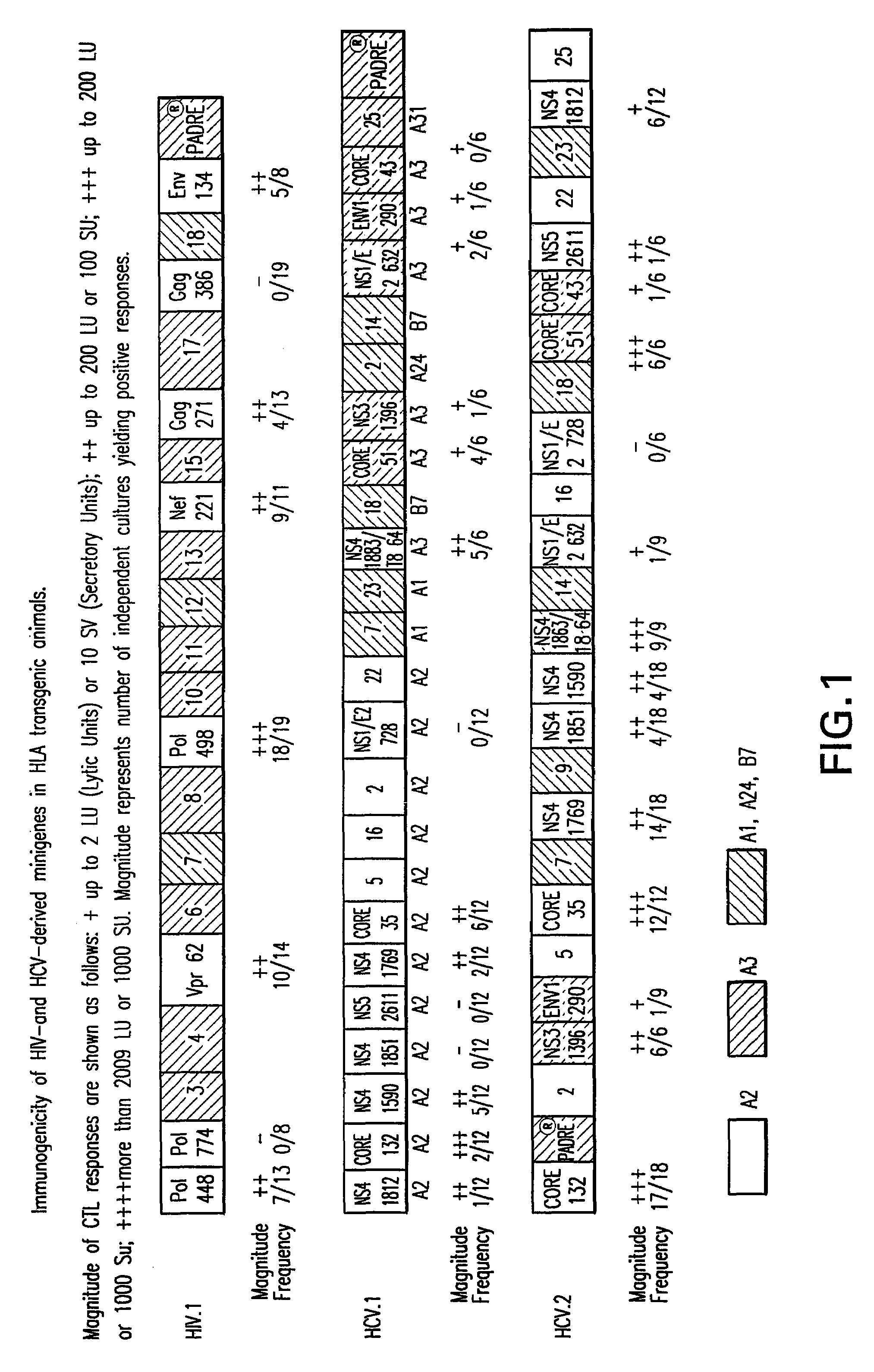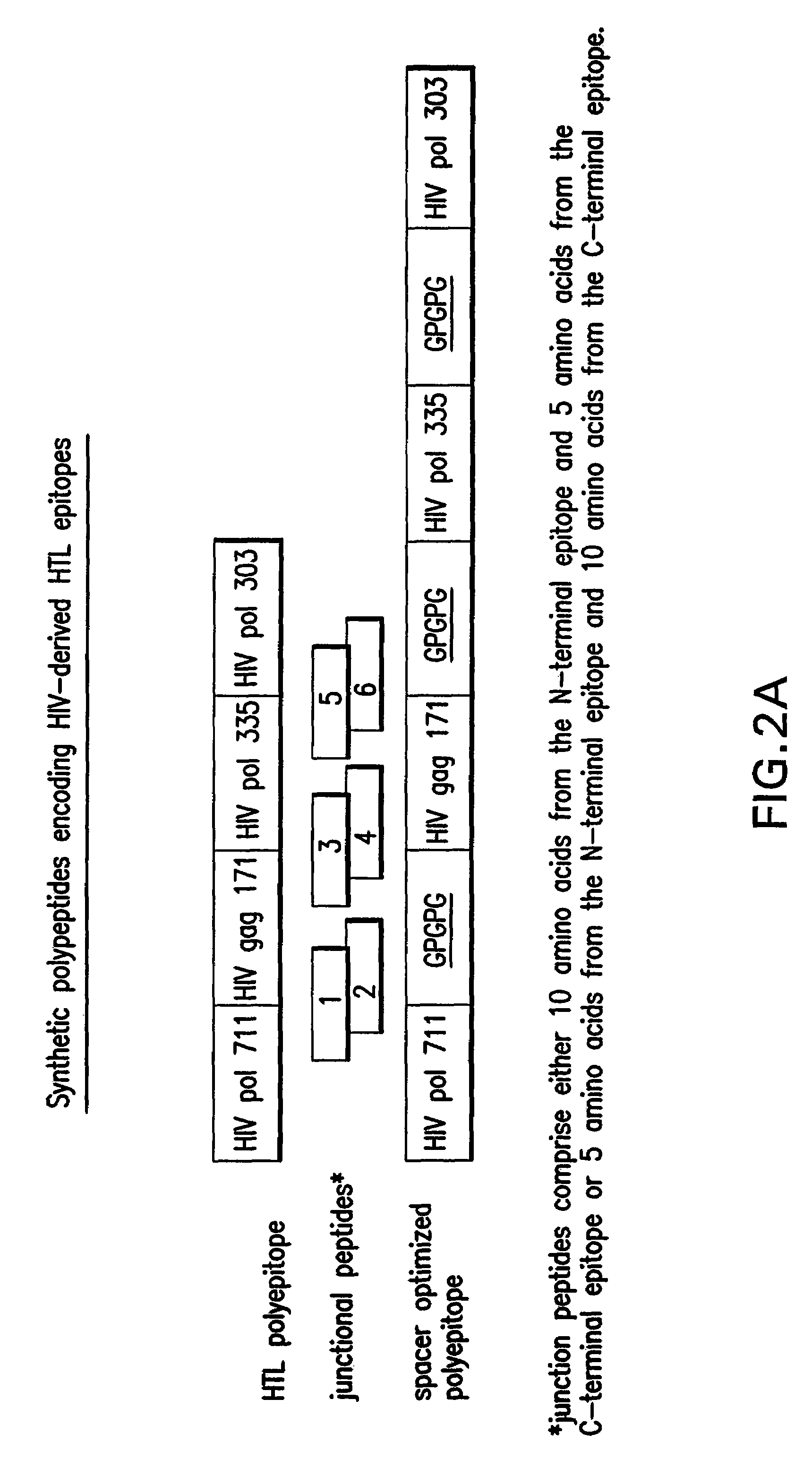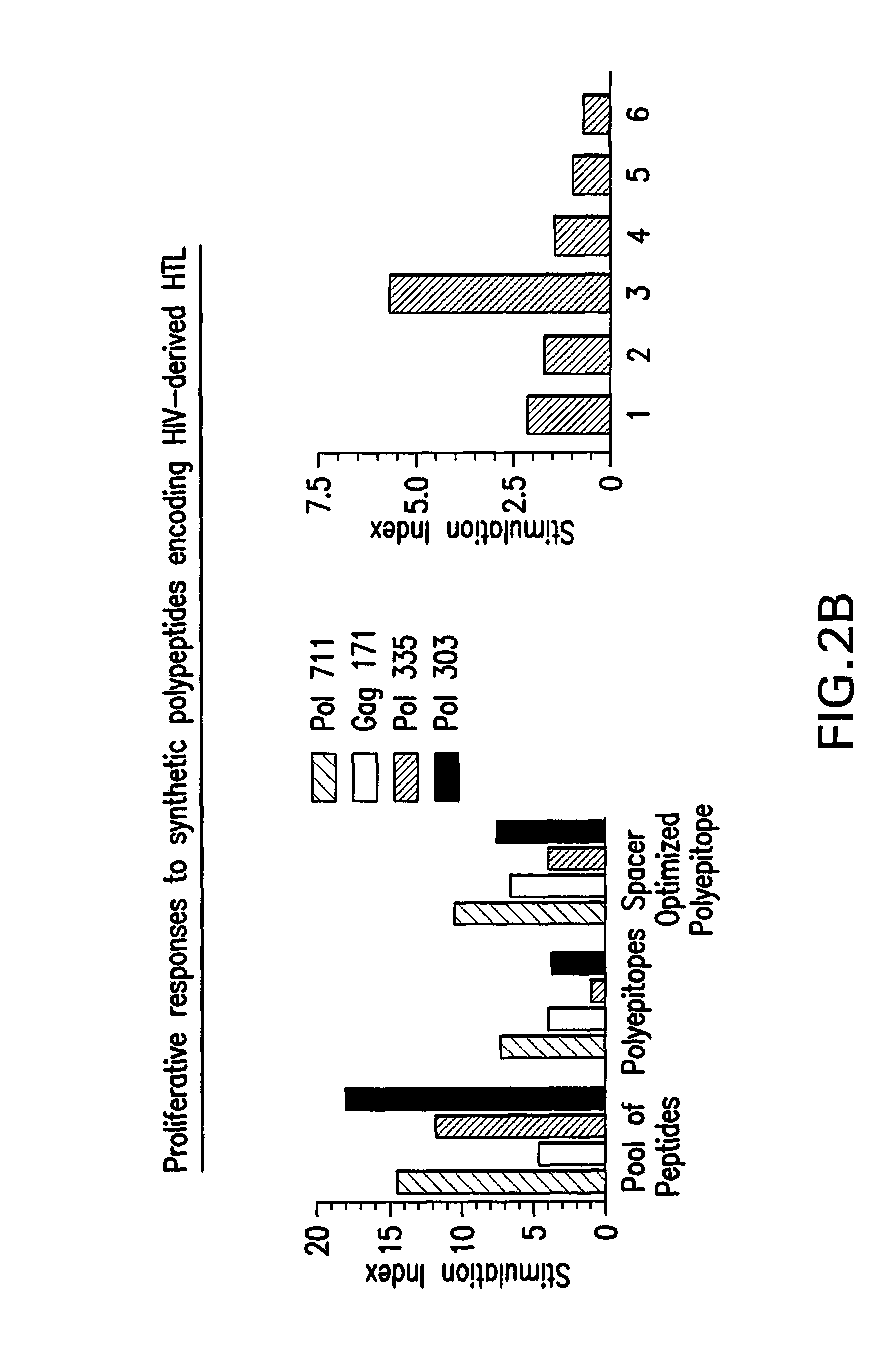Optimized multi-epitope constructs and uses thereof
a multi-epitope and construct technology, applied in the field of biochemistry, can solve the problems ineffective definition, and rather conservative substitutions, and achieve the effect of reducing the likelihood of unintended recombination events
- Summary
- Abstract
- Description
- Claims
- Application Information
AI Technical Summary
Benefits of technology
Problems solved by technology
Method used
Image
Examples
example 1
Antigenicity Assays
[0391]High-affinity peptide-specific CTL lines can be generated from splenocytes of transgenic mice that have been primed with DNA, peptide / IFA, or lipopeptide. Briefly, splenocytes from transgenic mice are stimulated 0.1 μg / ml peptide and LPS blasts. Ten days after the initial stimulation, and weekly thereafter, cells are restimulated with LPS blasts pulsed for 1 hour with 0.1 μg / ml peptide. CTL lines are assayed 5 days following restimulation in an in situ IFNγ ELISA as described above. Alternatively, CTL lines that are derived from, e.g., patients infected with the targeted pathogen or who have the targeted disease, e.g., cancer, can be used. Specific CTL lines that are not available either from transgenic mice or from patients are generated from PBMC of normal donors, drawing on the expertise in the art.
[0392]Target cells to be used in these assays are Jurkat or 0.221 cells transfected with A2.1 / Kb, A11 / Kb, A1 / Kb, or B7 / Kb for CTL lines derived from transgenic...
example 2
Mice, Immunizations and Cell Cultures
[0395]The derivation of the HLA-A2.1 / Kb (Vitiello et al., J Exp Med, Vol. 173(4):1007-15 (1991)) and A11 / Kb (Alexander et al., J Immunol, Vol. 159(10):4753-61 (1997)) transgenic mice used in this study has been described. HLA B7 Kb transgenic mice are available in house (Epimmune Inc., San Diego, Calif.). HLA DR2, DR3 and DR4 transgenic mice are obtained from C. David (Mayo Clinic). Non-transgenic H-2b mice are purchased from Charles River Laboratories or other commercial vendors. Immunizations are performed as described in (Ishioka et al., J Immunol, Vol. 162(7):3915-25 (1999)). All cells are grown in culture medium consisting of RPMI 1640 medium with HEPES (Gibco Life Technologies) supplemented with 10% FBS, 4 mM L-glutamine, 50 μM 2-ME, 0.5 mM sodium pyruvate, 100 μg / ml streptomycin and 100 U / ml penicillin.
[0396]HLA transgenic mice and antigenicity assays are used for the purpose of testing and optimization CTL responses. The natural crossreac...
example 3
Proliferation Assays
[0397]To assess the ability of HTL epitopes to induce an immune response, assays such as proliferation assays are often performed. For example, mouse CD4 T lymphocytes are immunomagnetically isolated from splenic single cell suspensions using DynaBeads Mouse CD4 (L3T4) (Dynal). Briefly, 2×107 spleen cells are incubated with 5.6×107 magnetic beads for 40 minutes at 4° C., and then washed 3 times. Magnetic beads are detached using DetachaBead Mouse CD4 (Dynal). Isolated CD4 T lymphocytes (2×105 cells / well) are cultured with 5×105 irradiated (3500 rad) syngeneic spleen cells in triplicate in flat-bottom 96-well microtiter plates. Purified peptides are added to wells at a final concentration of 20, 1, 0.05 and 0 μg / ml and cells are cultured for a total of 4 days. Approximately 14 hour before harvesting, 1 μCi of 3H-thymidine (ICN) is added to each well. The wells are harvested onto Unifilter GF / B plates (Packard) using the Filtermate Harvester (Packard). 3H-Thymidine...
PUM
 Login to View More
Login to View More Abstract
Description
Claims
Application Information
 Login to View More
Login to View More - R&D
- Intellectual Property
- Life Sciences
- Materials
- Tech Scout
- Unparalleled Data Quality
- Higher Quality Content
- 60% Fewer Hallucinations
Browse by: Latest US Patents, China's latest patents, Technical Efficacy Thesaurus, Application Domain, Technology Topic, Popular Technical Reports.
© 2025 PatSnap. All rights reserved.Legal|Privacy policy|Modern Slavery Act Transparency Statement|Sitemap|About US| Contact US: help@patsnap.com



